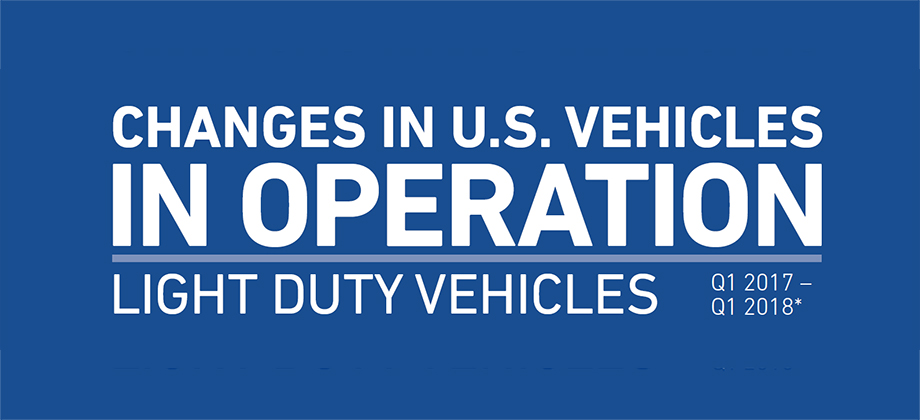Industries

Millennials have been accused of “killing” a lot of things. From napkins and fabric softener to cable and golf, the generation which makes up the largest population of the United States (aka Gen Y) is cutting a lot of cords. Despite homeowning being listed as one of the notorious generational group’s casualties, it’s one area that millennials want to keep alive, according to recent statistics. In fact, a new Experian study revealed 86% of millennials believe that buying a house is a good financial investment. However, only 15% have a mortgage today. One explanation for this gap may be that they appear too risky. Younger millennials (age 22-28) have an average near prime score of 652 and older millennials (age 29-35) have a prime score of 665. Both subsets fall below the average VantageScore® credit score* of U.S. consumers – 677. Yes, with the majority of millennials having near prime or worse credit scores, we can agree that they will need need to improve their financial hygiene to improve their overall credit rankings. But their dreams of homeownership have not yet been dashed. Seemingly high aspirations (of homeownership), disrupted by a reality of limited assets, low scores, and thin credit files, create a disconnect that suggests a lack of resources to get into their first homes – rather than a lack of interest. Or, maybe not. Maybe, after surviving a few first-time credit benders that followed soon after opening the floodgates to credit, millennials feel like the combination of low scores and the inability to get any credit is only salt in their wounds from their lending growing pains. Or maybe it’s all the student loans. Or maybe it’s the fact that so many of them are underemployed. But maybe there’s still more to the story. This emerging generation is known for having high expectations for change and better frictionless experiences in all areas of their life. It turns out, their borrowing behavior is no different. Recent research by Experian reveals consumers who use alternative financial services (AFS) are 11 years younger on average than those that do not. What’s the attraction? Financial technology companies have contributed to the explosive growth of AFS lenders and millennials are attracted to those online interactions. The problem is many of these trades are alternative finance products and are not reported to traditional credit bureaus. This means they do nothing to build credit experience in the eyes of traditional lenders and millennials with good credit history find it difficult to get access to credit well into their 20s. Alternative credit data provides a deeper dive into consumers, revealing their transactions and ability to pay as evidenced by alternative finance data, rental, utility and telecom payments. Alt data may make some millennials more favorable to lenders by revealing that their three-digit credit score (or lack there of) may not be indicative of their financial stability. By incorporating alternative financial services data (think convenient, tech-forward lenders that check all the boxes for bank removed millennials, not just payday loan recipients), credit-challenged millennials have a chance at earning recognition for their experience with alternative financial services that may help them get their first mortgage. Society may have preconceived notions about millennials, but lenders may want to consider giving them a second look when it comes to determining creditworthiness. In a national Experian survey, 53% of consumers said they believe some of these alternative sources would have a positive effect on their credit score. We all grow up sometime and as our needs change, there may come a day when millennials need more traditional financial services. Lenders who take a traditional view of risk may miss out on opportunities that alternative credit data brings to light. As lending continues to evolve, combining both traditional credit scores and alternative credit data appears to offer a potentially sweet (or rather, home sweet home) solution for you and your customers. *Calculated on the VantageScore® credit score model. Your VantageScore® credit score from Experian indicates your credit risk level and is not used by all lenders, so don't be surprised if your lender uses a score that's different from your VantageScore® credit score.

Consumer confidence is nearing an 18-year high. Unemployment figures are at record lows. Retail spend is healthy, and expected to stay that way through the back-to-school and holiday shopping booms. Translation for credit card issuers? The swiping and spending continue. In fact, credit card openings were up 4% in the first quarter of 2018 compared to the same time last year, and card utilization is hovering around 20.5%. Even with the Fed’s gradual 2018 rate hikes, consumers are shopping. In a new Mintel report, outstanding credit card debt is now $1.03 trillion (as of the end of Q1, 2018), and the number of consumers with credit cards is growing fastest among people aged 18 to 34. In the retail card arena specifically, boomers and Gen X’ers are leading the charge, opening 45% and 27% of new retails cards, respectively. “A stronger economy always bodes well for credit cards,” said Kelley Motley, director of analytics for Experian. “Now is the time for card issuers to zero in on their most loyal consumers and ensure they are treating them with the right offers, rewards and premium benefits.” Consumer data reveals the top incentives when selecting a rewards-based card includes cash back, gas rewards and retail cards (including travel rewards and airfare). In fact, for younger consumers, offering rewards has proven to be the most effective way to get them to switch from debit to credit cards. Cash back was the most preferred reward for consumers aged 18 to 44 when asked about their motivation to apply for a new card. For individuals 45 and older, 0% interest was the top motivator. Of course, beyond credit card opens, the ideal is to engage with the consumers who are utilizing the card the most. From a segmentation standpoint, the loyal retail cardholder has an average VantageScore® credit score of 671 with an average total balance of $1,633. They use the card regularly and consistently make payments. Finding more loyalists is the goal and can be achieved with informed segmentation insights and targeted prescreen campaigns. On the flip side, insights can inform card issuers with data, helping them to avoid wasting marketing dollars on consumers who merely want to game a quick credit card offer and then close an account. A batch and blast marketing approach no longer works in the credit card marketing game. “Consumers expect you to know them and their financial needs,” said Paul DeSaulniers, senior director of Experian’s segmentation solutions. “The data exists and tells you exactly who to target and how to structure the offer – you just need to execute.”

Customer Identification Program (CIP) solution through CrossCore® Every day, I work closely with clients to reduce the negative side effects of fraud prevention. I hear the need for lower false-positive rates; maximum fraud detection in populations; and simple, streamlined verification processes. Lately, more conversations have turned toward ID verification needs for Customer Information Program (CIP) administration. As it turns out, barriers to growth, high customer friction and high costs dominate the CIP landscape. While the marketplace struggles to manage the impact of fraud prevention, CIP routinely disrupts more than 10 percent of new customer acquisitions. Internally at Experian, we talk about this as the biggest ID problem our customers aren’t solving. Think about this: The fight for business in the CIP space quickly turned to price, and price was defined by unit cost. But what’s the real cost? One of the dominant CIP solutions uses a series of hyperlinks to connect identity data. Every click is a new charge. Their website invites users to dig into the data — manually. Users keep digging, and they keep paying. And the challenges don’t stop there. Consider the data sources used for these solutions. The winners of the price fight built CIP solutions around credit bureau header data. What does that do for growth? If the identity wasn’t sufficiently verified when a credit report was pulled, does it make sense to go back to the same data source? Keep digging. Cha-ching, cha-ching. Right about now, you might be feeling like there’s some sleight of hand going on. The true cost of CIP administration is much more than a single unit price. It’s many units, manual effort, recycled data and frustrated customers — and it impacts far more clients than fraud prevention. CIP needs have moved far beyond the demand for a low-cost solution. We’re thrilled to be leading the move toward more robust data and decision capabilities to CIP through CrossCore®. With its open architecture and flexible decision structure, our CrossCore platform enables access to a diverse and robust set of data sources to meet these needs. CrossCore unites Experian data, client data and a growing list of available partner data to deliver an intelligent and cost-conscious approach to managing fraud and identity challenges. The next step will unify CIP administration, fraud analytics and a range of verification treatment options together on the CrossCore platform as well. Spoiler alert. We’ve already taken that step.

Trivia question: Millennials don’t purchase new vehicles. True or False?

When it comes to driving the automotive industry forward, Experian Automotive has a motto: “The right cars. The right customers. The right data to know the difference.” We deliver an integrated perspective based on the highest quality automotive information and market intelligence. Data is important to us, and we have the most robust combination of data assets under one roof. The North American Vehicle Database℠, File One℠ Credit Database, Consumer View℠ Marketing Database, Online Activity Databases, and National Fraud Database℠ all fed into Experian’s Auto HyperConnect™. Auto HyperConnect houses two different solutions: Auto HyperTargeting™ and Auto HyperMonitoring™. There are four different components to Auto HyperTargeting, and the one we will focus on today is Expired Lease. Dealers have found success marketing to their own customers when vehicle leases come due. The challenge has been conquesting off-lease consumers who didn’t buy from them. While off-lease consumer marketing lists are available, they only provide the estimated lease end date and monthly lease payment. When restricted to this data, it’s hard to tell if a $550 a month payment is for a Ford F150 or a BMW 3-series. And yet this is exactly the level of detail needed to successfully target off-lease marketing. Experian’s new Auto HyperTargeting- Expired Lease addresses this challenge by enabling dealers to identify and engage off-lease audiences through a highly targeted approach that has never been possible! Now, finding customers is much easier and cost-effective. You can use the best mix of selection criteria to maximize your off-lease conquesting strategy. Some of the ways you can identify your audience are: Lease Maturity Date Vehicle Make Vehicle Model Zip Code Model Performance Tier Distance from Dealer Ship Vehicle Status (New or Used) Signing up for Auto HyperTargeting- Expired Lease comes with five perks. The first is a monthly file. This includes name and address, lease maturity date, make/model, monthly payment bands, and phone and email address when available. The second is the ability to make sign up for a subscription monthly payments. Third is marketing flexibility with direct mail, email, and phone. Four there is no firm offer of credit required for this. Finally, a quarterly sales report. ARA reports provide sales metrics industry wide for your targets. Other competitive features also available in Auto HyperTargeting- Expired Lease is the customers full contact information with name, address, email address and phone number. And for online and offline channels, you can select a specific audience that is customizable. Auto HyperTargeting has some amazing features to successfully conquest customers, and Expired Lease is one of the four ways to do this. Stay tuned for Auto HyperTargeting- Vehicle Owners coming up next!

As more financial institutions express interest and leverage alternative credit data sources to decision and assess consumers, lenders want to be assured of how they can best utilize this data source and maintain compliance. Experian recently interviewed Philip Bohi, Vice President for Compliance Education for the American Financial Services Association (AFSA), to learn more about his perspective on this topic, as well as to gain insights on what lenders should consider as they dive into the world of alternative credit data. Alternative data continues to be a hot topic in the financial services space. How have you seen it evolve over the past few years? It’s hard to pinpoint where it began, but it has been interesting to observe how technology firms and people have changed our perceptions of the value and use of data in recent years. Earlier, a company’s data was just the information needed to conduct business. It seems like people are waking up to the realization that their business data can be useful internally, as well as to others. And we have come to understand how previously disregarded data can be profoundly valuable. These insights provide a lot of new opportunities, but also new questions. I would also say that the scope of alternative credit data use has changed. A few years ago, alternative credit data was a tool to largely address the thin- and no-file consumer. More recently, we’ve seen it can provide a lift across the credit spectrum. We recently conducted a survey with lenders and 23% of respondents cited “complying with laws and regulations” as the top barrier to utilizing alternative data. Why do you think this is the case? What are the top concerns you hear from lenders as it relates to compliance on this topic? The consumer finance industry is very focused on compliance, because failure to maintain compliance can kill a business, either directly through fines and expenses, or through reputation damage. Concerns about alternative data come from a lack of familiarity. There is uncertainty about acquiring the data, using the data, safeguarding the data, selling the data, etc. Companies want to feel confident that they know where the limits are in creating, acquiring, using, storing and selling data. Alternative data is a broad term. When it comes to utilizing it for making a credit decision, what types of alternative data can actually be used? Currently the scope is somewhat limited. I would describe the alternative data elements as being analogous to traditional credit data. Alternative data includes rent payments, utility payments, cell phone payments, bank deposits, and similar records. These provide important insights into whether a given consumer is keeping up with financial obligations. And most importantly, we are seeing that the particular types of obligations reflected in alternative data reflect the spending habits of people whose traditional credit files are thin or non-existent. This is a good thing, as alternative data captures consumers who are paying their bills consistently earlier than traditional data does. Serving those customers is a great opportunity. If a lender wants to begin utilizing alternative credit data, what must they know from a compliance standpoint? I would begin with considering what the lender’s goal is and letting that guide how it will explore using alternative data. For some companies, accessing credit scores that include some degree of alternative data along with traditional data elements is enough. Just doing that provides a good business benefit without introducing a lot of additional risk as compared to using traditional credit score information. If the company wants to start leveraging its own customer data for its own purposes, or making it available to third parties, that becomes complex very quickly. A company can find itself subject to all the regulatory burdens of a credit-reporting agency very quickly. In any case, the entire lifecycle of the data has to be considered, along with how the data will be protected when the data is “at rest,” “in use,” or “in transit.” Alternative data used for credit assessment should additionally be FCRA-compliant. How do you see alternative credit data evolving in the future? I cannot predict where it will go, but the unfettered potential is dizzying. Think about how DNA-based genealogy has taken off, telling folks they have family members they did not know and providing information to solve old crimes. I think we need to carefully balance personal privacy and prudent uses of customer data. There is also another issue with wide-ranging uses of new data. I contend it takes time to discern whether an element of data is accurately predictive. Consider for a moment a person’s utility bills. If electricity usage in a household goes down when the bills in the neighborhood are going up, what does that tell us? Does it mean the family is under some financial strain and using the air conditioning less? Or does it tell us they had solar panels installed? Or they’ve been on vacation? Figuring out what a particular piece of data means about someone’s circumstances can be difficult. About Philip Bohi Philip joined AFSA in 2017 as Vice President, Compliance Education. He is responsible for providing strategic direction and leadership for the Association’s compliance activities, including AFSA University, and is the staff liaison to the Operations and Regulatory Compliance Committee and Technology Task Forces. He brings significant consumer finance legal and compliance experience to AFSA, having served as in-house counsel at Toyota Motor Credit Corporation and Fannie Mae. At those companies, Philip worked closely with compliance staff supporting technology projects, legislative tracking, and vendor management. His private practice included work on manufactured housing, residential mortgage compliance, and consumer finance matters at McGlinchey Stafford, PLLC and Lotstein Buckman, LLP. He is a member of the Virginia State Bar and the District of Columbia Bar. Learn more about the array of alternative credit data sources available to financial institutions.

In our previous post, we talked about Experian’s 2018 Attribution Study. This study is a wide-ranging, dealer-focused sales-driven attribution study to answer the question of what drives sales. Three takeaways were formed and the first was looking at shopper behavior instead of isolated KPIs. Now, we look at the second and third takeaways. Optimize your paid advertising Paid search is an important part of dealership marketing and precise targeting will help with both traffic and purchasing rate. Branded search drives quality traffic to websites. 7% of all traffic and 12% of HVU traffic comes from branded search. Along with traffic, the purchase rate was found to be 54% higher than average. In terms of value, New Make and Model has impressive results. 2% of all traffic and 12% of HVU traffic comes from New Make and Model. The purchase rate is 137% higher than average. Of note, we found that in order to optimize paid search to drive sales, you must buy your own name. 100% of dealers studied had buyers via branded search. With that, optimized “New Make Model” campaigns are crucial. 82% of dealers had buyers come through Make Model keywords. Traditionally, New Make Model would just create a higher funnel but since we are in the digital age, this does not happen anymore. Some participating dealers spent <20% of search budget on New Make Model campaigns. A key point is that no dealer had buyers come through via competitors’ keywords. As for a dealer’s website, display leasing offers and content for buyers since many search queries contained lease keywords. Although paid search is important, there are other channels to optimize and segmentation is key. This study found that conquesting with bulk email-blasts is not effective. You can achieve better email marketing results by targeting shoppers more intelligently and using quality lists. CRM-driven loyalty campaigns performed well in this segment. Display campaigns revealed that social media is no longer just for posting content but paid social advertising campaigns were effective. In fact, this study found Facebook display to be more effective than Google and other display networks. The reason is it is easier to segment and target a specific audience through Facebook. Google is more difficult to segment and has too many set-it-and-forget-it campaigns. Evaluate your third-party investments This brings us to third-parties, such as Automotive Shopping Portals and other lead providers. Performance with third-parties can vary and dealers should evaluate third-party performance as it relates to your sales. The third-party buy rate was under-indexed for dealers versus all sales. The business model for third-parties is not focused on driving traffic to dealer sites. Since there are so many vehicles listed on third-party sites from franchises, independent dealers, and private parties, there is a lot of “noise” for customers to sift through. For dealers, finding out what drives sales has led to Experian's 2018 Attribution. Our wide-ranging, dealer focused sales-driven attribution study focused on key variables and delivers three recommendations: Focus on website shopper behavioral metrics to drive sales. optimize paid search, specifically branded search and new make model campaigns. and evaluate third-party performance as it relates to your sales. With these, a dealer can be more confidant with their marketing and their data.

As I mentioned in my previous blog, model validation is an essential step in evaluating a recently developed predictive model’s performance before finalizing and proceeding with implementation. An in-time validation sample is created to set aside a portion of the total model development sample so the predictive accuracy can be measured on a data sample not used to develop the model. However, if few records in the target performance group are available, splitting the total model development sample into the development and in-time validation samples will leave too few records in the target group for use during model development. An alternative approach to generating a validation sample is to use a resampling technique. There are many different types and variations of resampling methods. This blog will address a few common techniques. Jackknife technique — An iterative process whereby an observation is removed from each subsequent sample generation. So if there are N number of observations in the data, jackknifing calculates the model estimates on N - 1 different samples, with each sample having N - 1 observations. The model then is applied to each sample, and an average of the model predictions across all samples is derived to generate an overall measure of model performance and prediction accuracy. The jackknife technique can be broadened to a group of observations removed from each subsequent sample generation while giving equal opportunity for inclusion and exclusion to each observation in the data set. K-fold cross-validation — Generates multiple validation data sets from the holdout sample created for the model validation exercise, i.e., the holdout data is split into K subsets. The model then is applied to the K validation subsets, with each subset held out during the iterative process as the validation set while the model scores the remaining K-1 subsets. Again, an average of the predictions across the multiple validation samples is used to create an overall measure of model performance and prediction accuracy. Bootstrap technique — Generates subsets from the full model development data sample, with replacement, producing multiple samples generally of equal size. Thus, with a total sample size of N, this technique generates N random samples such that a single observation can be present in multiple subsets while another observation may not be present in any of the generated subsets. The generated samples are combined into a simulated larger data sample that then can be split into a development and an in-time, or holdout, validation sample. Before selecting a resampling technique, it’s important to check and verify data assumptions for each technique against the data sample selected for your model development, as some resampling techniques are more sensitive than others to violations of data assumptions. Learn more about how Experian Decision Analytics can help you with your custom model development.

There are many factors attributing to the success of dealerships. When it comes to dealers, empirical guidance is a great way to study effective advertising. Experian brought Auto, Targeting, and the Dealer Positioning System capabilities together in a nationwide study to answer the ultimate question: what drives sales? The answers can be found in Experian’s 2018 Attribution Study. This is a wide-ranging, dealer-focused sales-driven attribution study that analyzed a few key variables. We deployed 187,701 tracking pixels to devices in 41,012 distinct households, focused on 15 digital metrics to learn about shopper behavior, and tied that digital shopping data to 2,436 vehicle sales. An industry first, Experian’s ability to combine automotive registration data, sales data, and website analytics and online behavior data puts us in a position to do something that very few companies can do. We use the household identifiers to not only see who bought a car and who bought specifically from a participating dealer, but also how they shopped the dealer’s site. Our ability to accurately identify a household’s digital behavior is based on the fact that we are a source compiler of the data and have it sitting under one roof. Others that attempt to provide this type of insight need to contract out for registrations, sales data imports from the dealership, website analytics, household identifiers, or all the above, which generally adds time to the insights. Using our sales-based approach, we can deliver unbiased attribution. Sales-based attribution is attributing credit to different advertising sources/campaigns based on actual vehicle sales – including those targeted consumers that may have purchased outside of the dealership. This is the Holy Grail of attribution for car dealers since it ties an offline activity such as buying a car back to the online advertising that’s taking up most their budgets every month. Because of that offline-online disconnect, sales-based attribution is difficult. Other automotive attribution models are typically focused on website conversions or website behavior – “what advertising can I attribute website leads to” (conversions) or “what advertising is driving users who follow the behavior that I think shows they’re likely to buy from my dealership” (website behavior.) What are the takeaways? We found three takeaways from our study. First off, we look at shopper behavior instead of isolating KPIs. Later we will discuss how traditional website metrics do not tie-in to sales. Second, we look at optimizing your paid advertising. Finally, we look at third-party investments. Although third parties drive sales, they may not be your sales. Looking at shopper behavior, not isolated KPI’s Traditional website metrics don’t tell the sales story for dealers. Traditional conversion stats are equal for buyers vs. all traffic such as VDPs or page views What this means is on average, buyers converted at a lower rate than overall website traffic. Looking solely at form submissions, hours and directions pageviews, and mobile clicks-to-call, don’t give the best view of what advertising is driving sales. With that, 98% of buyer traffic never submitted a form or went to the hours and directions page. This is a typical website conversion that dealers, vendors, and advertising agencies focus on. Since traditional web metrics don’t tell the story, there is another way. These are called High-Value Users, or HVU. They purchase at a 34% higher rate than overall traffic although they make up 11% of all traffic. High-Value Users are an Experian derived KPI. What makes someone an HVU are four different measurements. They must visit a website at least three times Spend at least six minutes on the site in total View at least eight pages in total View at least one VDP High-Value Users correlates to sales better than Vehicle Detail Page or VDP metrics. In this study, the correlation for VDP was measured at .595 which is rated a medium correlation. Meanwhile, HVU scored a .698 which is rated a high correlation. Looking at many different behavioral KPIs, like we do with our High-Value User (HVU) metric, correlates better to sales than just looking at how many VDPs you had. Driving more VDPs won’t necessarily help sales. But driving more HVUs is more likely to correlate with more sales. This also gets back to the attribution discussion above: Experian sales-based attribution is the best, and Experian’s HVUs are a good method for web-based attribution. From this attribution study, High-Value Users are a vital group for dealers to utilize. In our next post, we will go over the second and third takeaways from the attribution study: optimizing paid advertising and evaluating third-party investments.

The early stages of establishing a startup are some of the most difficult. In fact, it is said 90 percent of startups fail. Challenges include forming the right team, raising capital, and constructing a business model. But no one will deny that one of the most important parts of a startup’s business strategy is the data and technology that underpin its solution. On the one hand, new startups don’t benefit from a wealth of historic data on their clients, prospects, and partners like their more established competitors. While this isn’t the end of the world, it does emphasize the importance of finding a trusted data partner to build those data insights into the design for their application or platform. By using a trusted third-party data provider, companies can ensure they receive reliable and accurate data to utilize in their products and services. On the other hand, startups have the luxury of not being bogged down and burdened by legacy systems and older tech. While building a solution from the ground up is never an easy feat, startups can generally move faster. They can benefit from the latest technology to build new apps and products, making them nimbler than the incumbents in the space. Cloud technology enables organizations to quickly get their business up and running. In addition, companies are exposing many of their data assets and services through application programming interfaces (APIs), allowing others to more easily create their own solutions. Rather than reinventing the wheel, companies can leverage existing services to build more complex solutions and launch faster. “We’ve talked to countless startups and businesses and know they want easy, fast, and secure access to our data assets and services,” said Alpa Jain, vice president of Experian’s API Center of Excellence. “That’s why we’ve launched our API Developer Portal.” The list of APIs available through Experian’s Developer Portal includes solutions like consumer credit data, commercial credit data, commercial public record information, data quality, vehicle history information, and more. Companies can browse the list of available APIs, create an account, and start utilizing the APIs for building out a product within minutes. “Our goal is to help companies unlock untapped market opportunities and grow,” said Jain. “Success with APIs requires a successful developer program and portal to accelerate developer productivity – we believe we’ve created both with our new portal experience."

When it comes to vehicle history reporting, there are many offerings on the table. Some are better known than others, but only one comes from the global leader in data-driven solutions. AutoCheck® vehicle history reports are backed by Experian Information Solutions and have many key features that competitors don’t have. You and your customers can make more confident decisions knowing that the vehicle’s history is backed by data from Experian. Selling is made easier by providing greater transparency which strengthens consumer confidence in your inventory and brand to sell more cars. Below, we will help you better understand the value of AutoCheck throughout your dealership and take you through the five best practices for using AutoCheck. AutoCheck Best Practice #1: Integrate AutoCheck in all your dealership’s applications and websites. The good thing about AutoCheck is the ease of integration within a dealership’s applications and websites. AutoCheck works with hundreds of software providers, meaning it is highly flexible with whatever your dealership is using. It doesn’t matter if the user is a buyer, manager, technician, or any other role at a dealership. There are no additional costs for multiple users since there is an unlimited number of users for a dealership. If a dealership works with someone that AutoCheck doesn’t already work with, Experian will still set the dealership up and work with them to make sure they have a seamless integration. AutoCheck Best Practice #2: Run an AutoCheck on every vehicle acquisition. Since AutoCheck is a vehicle history reporting software, it can uncover unknown history that could pass off to a dealer or a consumer. AutoCheck checks for multiple owners, title brands, open recalls, previous auction announcements, prior vehicle uses, odometer fraud, accidents and so much more! The reason why this is so important comes down to the number of vehicles in operation. Per NADA Data, there were over 264 million cars and light-duty trucks in operation in the United States in 20161. If approximately 20% of the cars and light-duty trucks on the road have been in an accident, that is over 50 million vehicles currently on the road that have been in an accident². The average diminished value of a vehicle in an accident is $3,0193. Finding only one accident per month you did not know about justifies and pays for the cost of an AutoCheck subscription. AutoCheck Best Practice #3: Promote your inventory with AutoCheck. AutoCheck can also be used to directly promote a dealer’s inventory. All a dealer does is integrate AutoCheck with their dealership’s website. An AutoCheck link is automatically added to every vehicle. There is no additional charge which provides savings to both the dealer and the consumer. The most current data is provided with every click to give feedback to dealers. AutoCheck is the only vehicle history provider on all the top online shopping sites. Consumers can look for AutoCheck on Autotrader℠, Cars.com™, CarGurus®, ebay™ Motors, Edmunds®, and Kelly Blue Book®. AutoCheck Best Practice #4: Build confidence in every sale with AutoCheck. The patented AutoCheck Score is a numerical rating summarizing the events about the vehicle. This helps dealers and consumers to compare vehicles of similar class and age based on a scale of 1 to 100. It also predicts the likelihood the car will be on the road in 5 years. The Score helps to understand a vehicle’s reliability as it pertains to the vehicle’s age, number of owners and accidents. When comparing two vehicles, it is also important to look at the Similar Vehicles Score. Even though a vehicle may have a score of 89 compared to a similar vehicle which scored an 85, the first vehicle may have a score range of 91-96. This would mean the vehicle that scored an 89 is lower than the average. The AutoCheck Score is based on many variables including age, vehicle class, mileage, number of owners, and vehicle use and event. Along with the AutoCheck Score, the BuyBack Protection program from AutoCheck will help build confidence. Experian will buy back a vehicle if the AutoCheck report fails to list certain brands available to Experian at the time the report was issued. This program is up to 110% of NADA Guides retail value, plus up to $500 in aftermarket accessories. Registered and qualified vehicles have this protection available at no cost and will have a badge on their report. AutoCheck Best Practice #5: Promote your service department by providing service data. The final aspect and best practice focuses on the service department and service data. Dealers can display services they have performed within AutoCheck. With AutoCheck, dealers and consumers can see that a vehicle has been well maintained with reported service data. Reporting service data provides an easy to understand format for customers and builds confidence for shoppers. All-in-all, AutoCheck can be used in every department successfully. To recap, these are the five best practices for AutoCheck. Integrate AutoCheck in all your dealership’s applications and websites. Run an AutoCheck on every vehicle. Promote your inventory with AutoCheck. Build consumer confidence in every sale with AutoCheck. Promote your service department and display service records on AutoCheck. ¹Source: NADA DATA, Annual General Overview 2016, page 3. https://www.nada.org/2016NADAdataHighlights/ ²Source: Experian Analysis, more than 18 % of cars and light duty trucks in operation have been in an accident. 3Source: Mitchell Industry Trends Report, Q1 2017, page 32 http://www.mitchell.com/Portals/0/Assets/industry-trends/itr-vol-17-no-1-winter-2017-apd.pdf

An introduction to the different types of validation samples Model validation is an essential step in evaluating and verifying a model’s performance during development before finalizing the design and proceeding with implementation. More specifically, during a predictive model’s development, the objective of a model validation is to measure the model’s accuracy in predicting the expected outcome. For a credit risk model, this may be predicting the likelihood of good or bad payment behavior, depending on the predefined outcome. Two general types of data samples can be used to complete a model validation. The first is known as the in-time, or holdout, validation sample and the second is known as the out-of-time validation sample. So, what’s the difference between an in-time and an out-of-time validation sample? An in-time validation sample sets aside part of the total sample made available for the model development. Random partitioning of the total sample is completed upfront, generally separating the data into a portion used for development and the remaining portion used for validation. For instance, the data may be randomly split, with 70 percent used for development and the other 30 percent used for validation. Other common data subset schemes include an 80/20, a 60/40 or even a 50/50 partitioning of the data, depending on the quantity of records available within each segment of your performance definition. Before selecting a data subset scheme to be used for model development, you should evaluate the number of records available in your target performance group, such as number of bad accounts. If you have too few records in your target performance group, a 50/50 split can leave you with insufficient performance data for use during model development. A separate blog post will present a few common options for creating alternative validation samples through a technique known as resampling. Once the data has been partitioned, the model is created using the development sample. The model is then applied to the holdout validation sample to determine the model’s predictive accuracy on data that wasn’t used to develop the model. The model’s predictive strength and accuracy can be measured in various ways by comparing the known and predefined performance outcome to the model’s predicted performance outcome. The out-of-time validation sample contains data from an entirely different time period or customer campaign than what was used for model development. Validating model performance on a different time period is beneficial to further evaluate the model’s robustness. Selecting a data sample from a more recent time period having a fully mature set of performance data allows the modeler to evaluate model performance on a data set that may more closely align with the current environment in which the model will be used. In this case, a more recent time period can be used to establish expectations and set baseline parameters for model performance, such as population stability indices and performance monitoring. Learn more about how Experian Decision Analytics can help you with your custom model development needs.

Data driven insights about your marketplace are critical to your success. For instance, data can be used to determine if your customers are loyal or if they are likely to defect to another dealership. According to Experian research, there were 54 million consumer vehicle sales transactions in 2017. While that may sound great, not all returning buyers are loyal. In fact, we found that three out of four people are not dealer loyal. Even though only ¼ of a dealer’s customer base regularly return, the remaining ¾ can be conquested. 41 million non-dealer loyal vehicle sales happened in 2017, meaning there were 41 million chances to conquest for dealers across the country. You may be asking yourself “that’s interesting, but how do I win?”. Start with best in class data. At Experian, we work with our North American Vehicle Database℠, File One℠ Credit Database, and Consumer View℠ Marketing Database. These databases have information including the history of 900 million vehicles in the United States and Canada, 10 billion vehicle history records, to consumer data about credit inquiries and data attributes for consumers and households. Figuring out how to increase customer loyalty and conquesting becomes simple once you consider Experian’s solution: Auto HyperConnect™. Auto HyperConnect is the answer to the question of “how do I use my data to win my market?” Our Auto HyperConnect suite includes two different products. The first is Auto HyperMonitoring™ which improves customer loyalty. The second is Auto HyperTargeting™, which offers four different ways to conquest vehicle owners: through owners/service, expired leases, off-loan, and current vehicle equity. Since there is a lot to talk about regarding conquesting vehicle owners, this will be a basic overview and we will go into detail later. Experian goes beyond providing quality data to our clients- we are your partner in the discovery of critical information to drive your success. The first step in our Auto HyperTargeting methodology starts with discovery - working with an Experian Automotive representative to create the most effective conquest strategy. After that, quantify and understand what data is available and how similar records have performed historically. Next, execute the strategy by launching campaigns to communicate with prospective customers via direct mail, email, and phone, etc. Finally, measure and track results with quarterly marketing attribution reporting with Experian’s Auto Response Analysis With Auto HyperTargeting, these six product benefits help it to stand apart from the competition: Highly targeted audiences and attributes lists closely fit prospecting profiles. These profiles include geography, vehicle make, vehicle class, and lease maturity data. Append 1,500+ demographic attributes, 650+ psychographics, and 70+ Mosaic segments. Complete, accurate, and actionable data is delivered timely. Data derived from the source with proprietary processes ensure that it’s the highest quality and best coverage. Flexible marketing execution has no firm offer of credit required and customizable messaging for relevancy. Full visibility performance tracking has closed loop ARAs delivered quarterly with performance details. Performance driven audience hyper targeting approach gets dealers the closest to the customer as possible while saving time and money. Focusing on marketing strategy and tactics delivers results and eliminates waste from unproductive volume/cost opportunities. Finally, the competitive advantage takes market share away from the competition by identifying, engaging, and converting the right prospects. Briefly, here are the four different types of conquesting a dealer can do with Auto HyperTargeting: Expired Lease lets a dealer conquest new prospects based on customized input criteria including zip codes, vehicle makes and classes, and lease maturity data with the marketing flexibility necessary to drive engagement and win new customers. There is no firm offer of credit required. Vehicle Owners lets a dealer engage with current owners to enable new relationships and opportunities. These opportunities reach out to service and parts, aftermarket accessories, new/used car, warranty, insurance, and financial services. Vehicle Equity identifies, engages, and acquires new customers with positive vehicle equity status and maximizes sales opportunities. Getting consumers into a new vehicle, into re-finance solutions, into new loans, and get third party offers in front of consumers are all apart of vehicle equity. End of Loan connects dealers with consumers who are reaching the end of their loan term and help them transition into their new vehicle of choice. These include customized offers, getting consumers into a new vehicle, getting consumers into new loans, and getting third party offers in front of consumers. Juggling the requirements to both maintain customer loyalty and conquest for new ones can be difficult, but our Auto HyperConnect suite helps dealers to succeed at both. In our upcoming mini-series on conquesting with Auto HyperTargeting, we will detail it’s four core capabilities in more detail to help dealers to conquest with confidence.

Consumers and businesses alike have been hyper-focused on all things data over the past several months. From the headlines surrounding social media privacy, to the flurry of spring emails we’ve all received from numerous brands due to the recent General Data Protection Regulation (GDPR) going into effect in Europe, many are trying to assess the data “sweet spot.” In the financial services space, lenders and businesses are increasingly seeking to leverage enhanced digital marketing channels and methods to deliver offers and invitations to apply. But again, many want to know, what are the data rules and how can they ensure they are playing it safe in such a highly regulated environment. In an Experian-hosted webinar, Credit Marketing in the Digital Age, the company recently featured a team of attorneys from Venable LLP’s award-winning privacy and advertising practice. There’s no question today’s consumers expect hyper-targeted messages and user experiences, but with the number of data breaches on the rise, there is also the concern around data access. Who has my data? Is it safe? Are companies using it in the appropriate way? As financial services companies wrestle with the laws and consumer expectations, the Venable legal team provided a few insights to consider. While the digital delivery channels may be new, the underlying credit product remains the same. A prescreened offer is a prescreened offer, and an application for credit is still an application for credit. The marketing of these and other credit products is governed by an array of pre-existing laws, regulations, and self-regulatory principles that combine to form a unique compliance framework for each of the marketing channels. Adhere to credit regulations, but build in enhanced policies and technological protocols with digital delivery. With digital delivery of the offer, lenders should be thinking about the additional compliance aspects attached to those varying formats. For example, in the case of digital display advertising, you should pay close attention to ensuring delivery of the ad to the correct consumer, with suitable protections in place for sharing data with vendors. Lenders and service providers also should think about using authentication measures to match the correct consumer with a landing page containing the firm offer along with the appropriate disclosures and opt-outs. Strong compliance policies are important for all participants in this process. Working with a trusted vendor that has a commitment to data security, compliance by design, and one that maintains an integrated system of decisioning and delivery, with the ability to scrub for FCRA opt-outs, is essential. Consult your legal, risk and compliance teams. The digital channels raise questions that can and must be addressed by these expert audiences. It is so important to partner with service providers that have thought this through and can demonstrate a compliance framework. Embrace the multitude of delivery methods. Yes, there are additional considerations to think about to ensure compliance, but businesses should seek opportunities to reach their consumers via email, text, digital display and beyond. Also, digital credit offers need not replace mail and phone and traditional channels. Rather, emerging digital channels can supplement a campaign to drive the response rates higher. In Mary Meeker’s annual tech industry report, she touched on a phenomenon called the “privacy paradox” in which companies must balance the need to personalize their products and services, but at the same time remain in good favor with consumers, watchdog groups and regulators. So, while financial services players have much to consider in the regulatory space, the expectation is they embrace the latest technology advancements to interact with their consumers. It can be done and the delivery methods exist today. Just ensure you are working with the right partners to respect the data and consumer privacy laws.
